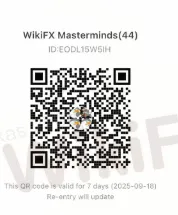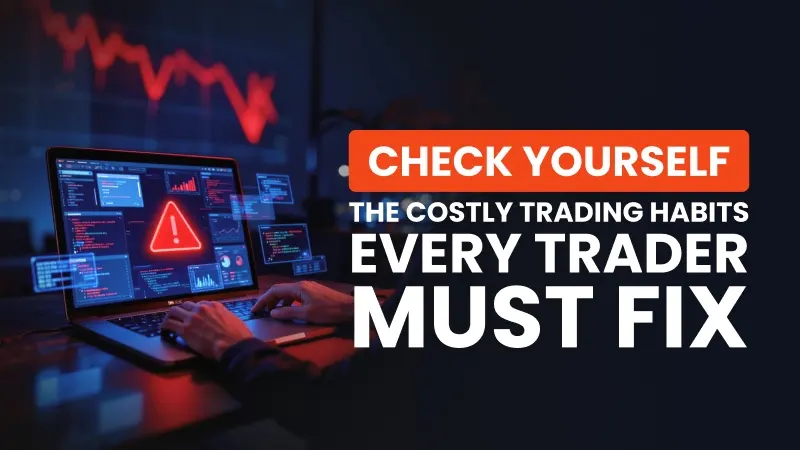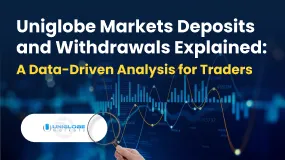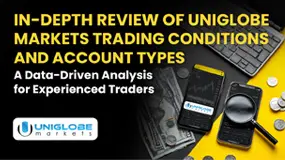简体中文
繁體中文
English
Pусский
日本語
ภาษาไทย
Tiếng Việt
Bahasa Indonesia
Español
हिन्दी
Filippiiniläinen
Français
Deutsch
Português
Türkçe
한국어
العربية
Standard Deviation in Forex: How to Apply This to Your Trading Strategy?
Abstract:Do you recall the concept of standard deviation being taught in your school days? The concept, which measures the variation within a set of data points relative to the mean average of the dataset. A greater standard deviation hints at higher variability. On the other hand, a lower standard deviation means lower variability from the mean. But what is standard deviation in forex, and how can you apply it to your trading strategy? This is what we will discuss here.

Do you recall the concept of standard deviation being taught in your school days? The concept, which measures the variation within a set of data points relative to the mean average of the dataset. A greater standard deviation hints at higher variability. On the other hand, a lower standard deviation means lower variability from the mean. But what is standard deviation in forex, and how can you apply it to your trading strategy? This is what we will discuss here.
How Does Standard Deviation Apply to Trading?
Understanding how standard deviation applies to forex trading requires visualizing data points as closing prices, where the mean represents the average price over the evaluated period. Forex traders frequently use standard deviation to determine the risk or volatility attached to currency pairs. Forex pairs with high volatility offer a wide range of risk. Forex pairs with increased volatility witness intense price fluctuations, leading to a higher standard deviation. In contrast, forex pairs with lower price changes will translate to a lower standard deviation. At the same time, several trading indicators factor in standard deviation to compute risk vs return when applying risk management. When applying standard deviation to the return rate, it can measure the historical volatility of a trade or investment.
Analyzing the Forex Market Using Standard Deviation
Standard deviation helps measure the current price action of the forex market. For instance, market tops with increasing standard deviation are a sign of indecisive traders. Whereas market tops with low standard deviation are a potential indicator of a more mature forex market. If we talk about the market bottoms with high standard deviation, it hints at panicked sell-offs. The low standard deviation here indicates a potential disinterest of traders now.
Standard Deviation Calculation
Calculating standard deviation is easy through these steps-
- Figure out the mean average closing price for every period across the timespan you are evaluating.
- Ascertain the deviation for each period by deducting the average price from the closing price.
- Compute the square of each deviation.
- Add all squared deviations.
- Divide the overall amount by the number of periods.
- Calculate the square root of the quotient found in the earlier step.
Interestingly, most forex trading platforms feature automatic standard deviation calculation of any given period.
Standard Deviation-led Forex Trading Strategies
Standard deviation, as discussed above, is used as a tool for market volatility measurement. However, traders also use it to calculate several other indicators to gain a highly comprehensive analysis. As you go further, you will witness the application of standard deviation in your forex trading strategy.
Risk Assessment
Standard deviation is considered a vital tool to measure volatility, which helps assess investment risks. Greater price swings and potential losses lurk with a greater standard deviation.
Investment Diversification
Traders also apply diversification as a strategy to reduce risks by investing in several currency pairs. With standard deviation, traders can compare the volatility of different currency pairs in their portfolios. A diversified portfolio would have currency pairs with varying standard deviations to reduce the impact of a single highly volatile currency pair.
Volatility Trading
Certain forex traders engage in volatility trading, a strategy to profit from price fluctuations regardless of where the market is moving. This strategy usually focuses on options and derivatives, and standard deviation helps figure out the magnitude of currency pair price fluctuations.
Stop Loss and Take Profit Orders
You can apply standard deviation to figure out the right stop loss and take profit levels. Amid a high standard deviation, you may need wider stop loss and take profit ranges to deal with the forex pair price volatility. A lower standard deviation, on the other hand, may need tighter ranges.
Bollinger Bands
Technical indicators such as Bollinger Bands use standard deviation to predict trends based on price movements. Bollinger bands use this to spot trend reversals and breakout points. These bands feature a moving average line and two lines plotted above and below the moving average at specific standard deviations. The standard deviation ranges demonstrate the overbought or oversold condition compared to its average price.
Mean Reversion
Mean reversion forms part of a fundamental analysis that indicates the potential reversal of a currency pair price to its historical mean or equilibrium. Here, standard deviation helps identify situations showcasing the deviation of a currency pairs price from its mean. It thus signals an opportunity to open a trade, assuming that the price will come back to its average.
Summing Up
Standard deviation serves as one of the most valuable tools in forex trading, helping traders gauge volatility, manage risk, and refine strategies with greater precision. By understanding how much prices deviate from their average, traders can make informed decisions on position sizing, stop-loss placement, and overall portfolio diversification. Whether you use it directly or through indicators like Bollinger Bands, standard deviation provides a statistical edge to anticipate market movements and identify potential opportunities. Mastering its application can transform your trading approach—from mere speculation to data-driven strategy.
To know more about technical indicator-based forex strategy, join WikiFX Masterminds.
1. Scan the QR code placed right at the bottom.
2. Download the WikiFX Pro app.
3. Afterward, tap the ‘Scan’ icon placed at the top right corner
4. Scan the code again.
5. Congratulations on joining the group.

Disclaimer:
The views in this article only represent the author's personal views, and do not constitute investment advice on this platform. This platform does not guarantee the accuracy, completeness and timeliness of the information in the article, and will not be liable for any loss caused by the use of or reliance on the information in the article.
Read more

Check Yourself: The Costly Trading Habits Every Trader Must Fix
Are the trading habits you barely notice the very ones quietly destroying your profits, and could a single overlooked mistake be costing you far more than you realise?

Scandinavian Capital Markets Exposed: Traders Cry Foul Play Over Trade Manipulation & Fund Scams
Does Scandinavian Capital Markets stipulate heavy margin requirements to keep you out of positions? Have you been deceived by their price manipulation tactic? Have you lost all your investments as the broker did not have risk management in place? Were you persuaded to bet on too risky and scam-ridden instruments by the broker officials? These are some burning issues traders face here. In this Scandinavian Capital Markets review guide, we have discussed these issues. Read on to explore them.

Uniglobe Markets Deposits and Withdrawals Explained: A Data-Driven Analysis for Traders
For any experienced trader, the integrity of a broker isn't just measured in pips and spreads; it's fundamentally defined by the reliability and transparency of its financial operations. The ability to deposit and, more importantly, withdraw capital seamlessly is the bedrock of trust between a trader and their brokerage. When this process is fraught with delays, ambiguity, or outright failure, it undermines the entire trading relationship. This in-depth analysis focuses on Uniglobe Markets, a broker that has been operational for 5-10 years and presents itself as a world-class trading partner. We will move beyond the marketing claims to scrutinize the realities of its funding mechanisms. By examining available data on Uniglobe Markets deposits and withdrawals, we aim to provide a clear, evidence-based picture for traders evaluating this broker for long-term engagement. Our investigation will be anchored primarily in verified records and user exposure reports to explain the Uniglobe Mar

In-Depth Review of Uniglobe Markets Trading Conditions and Account Types – An Analysis for Traders
For experienced traders, selecting a broker is a meticulous process that extends far beyond headline spreads and bonus offers. It involves a deep dive into the fundamental structure of a broker's offering: its regulatory standing, the integrity of its trading conditions, and the flexibility of its account types. Uniglobe Markets, a broker with an operational history spanning over five years, presents a complex case study. It offers seemingly attractive conditions, including high leverage and a diverse account structure, yet operates within a regulatory framework that demands intense scrutiny. This in-depth analysis will dissect the Uniglobe Markets trading conditions and account types, using data primarily sourced from the global broker inquiry platform, WikiFX. We will explore the Uniglobe Markets minimum deposit, leverage, and account types to provide a clear, data-driven perspective for traders evaluating this broker as a potential long-term partner.
WikiFX Broker
Latest News
GCash Rolls Out Virtual US Account to Cut Forex Fees for Filipinos
The 350 Per Cent Promise That Cost Her RM604,000
INZO Commission Fees and Spreads Breakdown: A 2025 Data-Driven Analysis for Traders
Garanti BBVA Securities Exposed: Traders Report Unfair Charges & Poor Customer Service
"Just 9 More Lots": Inside the Endless Withdrawal Loop at Grand Capital
Private payroll losses accelerated in the past four weeks, ADP reports
Core wholesale prices rose less than expected in September; retail sales gain
Consumer confidence hits lowest point since April as job worries grow
CFTC Polymarket Approval Signals U.S. Relaunch 2025
MH Markets Commission Fees and Spreads Analysis: A Data-Driven Breakdown for Traders
Currency Calculator



